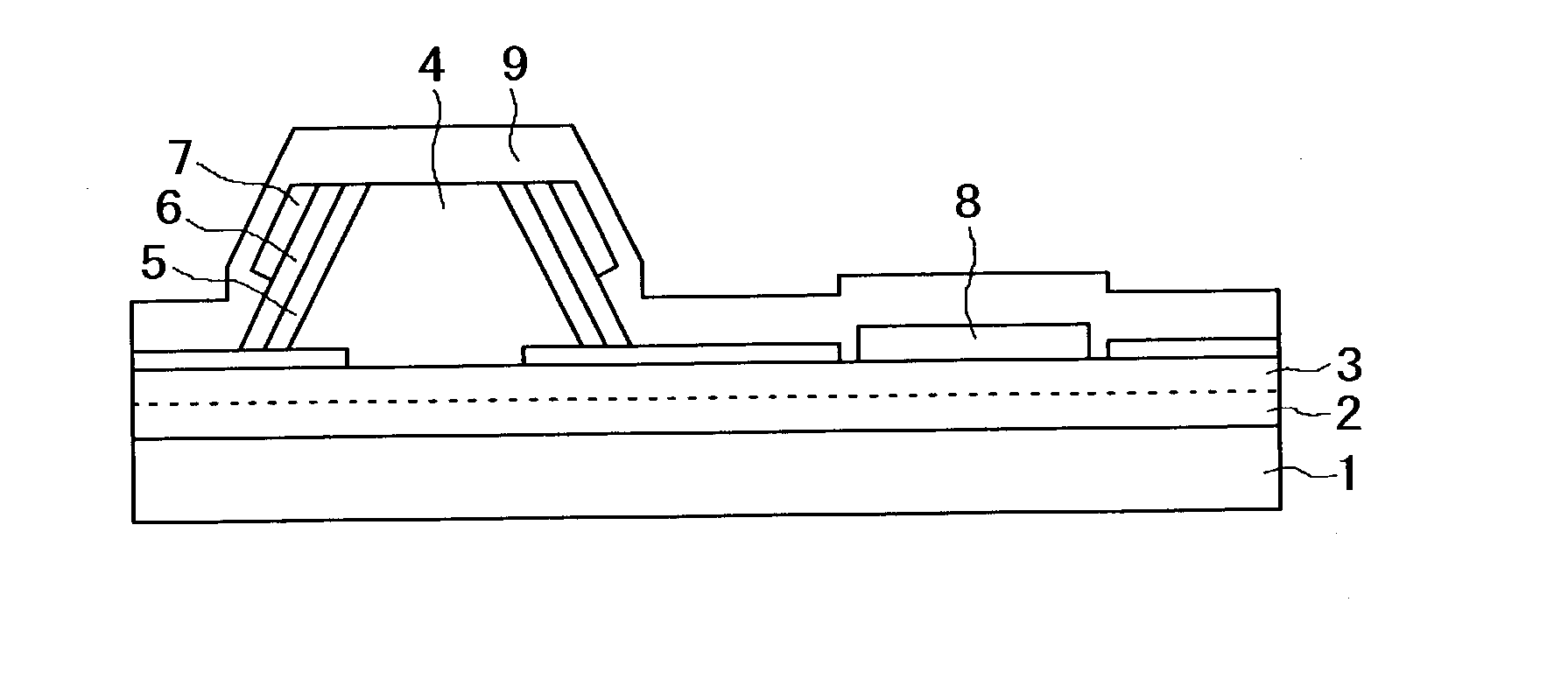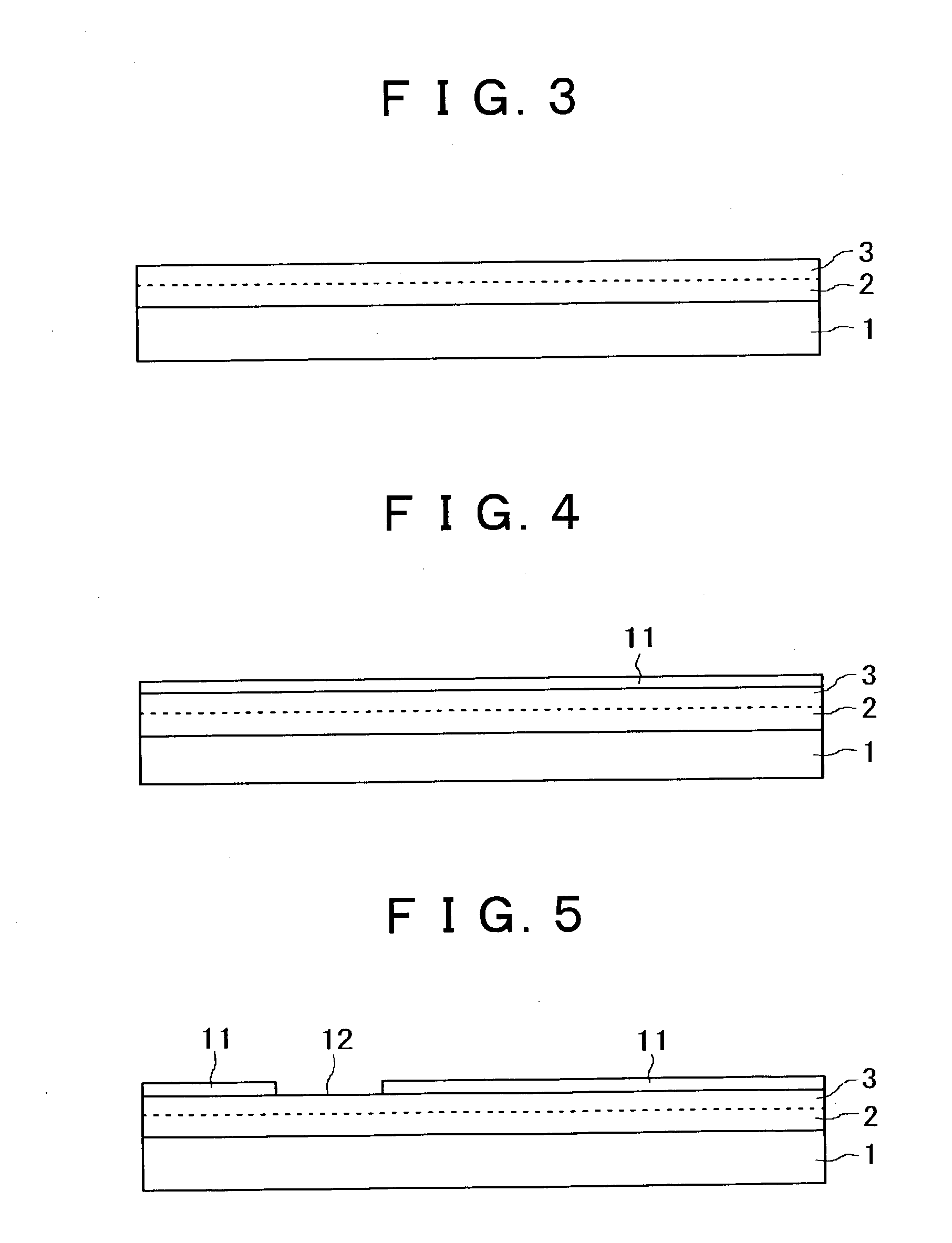Semiconductor light emitting device and fabrication method thereof
a technology of semiconductor light emitting device and fabrication method, which is applied in the manufacture of semiconductor/solid-state devices, semiconductor devices, and devices containing threading dislocations upwardly, and achieves excellent luminous efficiency
- Summary
- Abstract
- Description
- Claims
- Application Information
AI Technical Summary
Benefits of technology
Problems solved by technology
Method used
Image
Examples
Embodiment Construction
[0079]Hereinafter, the present invention will be described in detail with reference to the drawings. It is to be noted that in the drawings, parts of a semiconductor light emitting device of the present invention are sometimes depicted on a scale different from the actual scale for the sake of convenience of description.
[0080]A semiconductor light emitting device of the present invention is characterized by including a crystal layer formed on a substrate, the crystal layer having a tilt crystal plane tilted from the principal plane of the substrate, and a first conductive type layer, an active layer, and a second conductive type layer, which are formed on the crystal layer in such a manner as to extend within planes parallel to the tilt crystal plane, wherein the device has a shape formed by removing the apex and its vicinity of the stacked layer structure formed on the substrate.
[0081]The substrate used herein is not particularly limited insofar as it allows a crystal layer having ...
PUM
 Login to View More
Login to View More Abstract
Description
Claims
Application Information
 Login to View More
Login to View More - R&D
- Intellectual Property
- Life Sciences
- Materials
- Tech Scout
- Unparalleled Data Quality
- Higher Quality Content
- 60% Fewer Hallucinations
Browse by: Latest US Patents, China's latest patents, Technical Efficacy Thesaurus, Application Domain, Technology Topic, Popular Technical Reports.
© 2025 PatSnap. All rights reserved.Legal|Privacy policy|Modern Slavery Act Transparency Statement|Sitemap|About US| Contact US: help@patsnap.com



